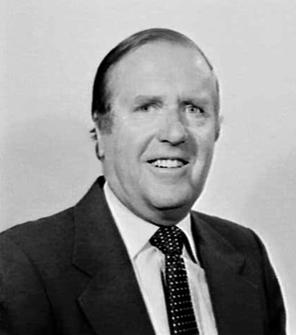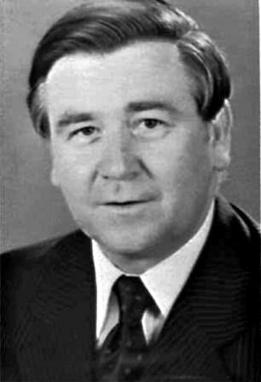Related Research Articles

The Long Bay Correctional Complex, commonly called Long Bay, is a correctional facility comprising a heritage-listed maximum and minimum security prison for males and females and a hospital to treat prisoners, psychiatric cases and remandees, located in Malabar, Sydney, New South Wales, Australia. The complex is located approximately 14 kilometres (8.7 mi) south of the Sydney CBD and is contained within a 32-hectare (79-acre) site. The facility is operated by Corrective Services New South Wales, a department administered by the Government of New South Wales.
Parklea Correctional Centre, a privately managed Australian maximum and minimum security prison for males, is located at Parklea, in the north-western suburbs of Sydney, New South Wales. The facility is operated by MTC Ventia and has a current capacity for 1,350 inmates. The Centre accepts prisoners charged and convicted under New South Wales and/or Commonwealth legislation and incorporates a minimum-security work-release centre for inmates nearing release with a capacity of 120. A Compulsory Drug Treatment Correctional unit is incorporated within the centre.

Nicholas Frank Hugo Greiner is an Australian politician who served as the 37th Premier of New South Wales from 1988 to 1992. Greiner was Leader of the New South Wales Division of the Liberal Party from 1983 to 1992 and Leader of the Opposition from 1983 to 1988. Greiner had served as the Federal President of the Liberal Party of Australia from 2017 to 2020. He served as the Consul-General in the United States of America, New York from 2021 to 2023.
Truth in sentencing (TIS) is a collection of different but related public policy stances on sentencing of those convicted of crimes in the justice system. In most contexts, it refers to policies and legislation that aim to abolish or curb parole so that convicts serve the period to which they have been sentenced. Truth in sentencing advocates relate such policies in terms of the public's right to know. They argue, for example, that it is deceptive to sentence an individual to "seven-to-nine years" and then release them after they have served only six years.
Rear Admiral Peter Ross Sinclair, is a retired senior officer of the Royal Australian Navy who served as the 35th Governor of New South Wales from 8 August 1990 to 1 March 1996. Born in Manly, New South Wales, he was educated at North Sydney Boys High School before joining the Navy through the Royal Australian Naval College.
Members of the New South Wales Legislative Assembly who served in the 50th parliament held their seats from 1991 to 1995. They were elected at the 1991 state election, and at by-elections. The Speaker was Kevin Rozzoli.

Leon Ashton Punch was a New South Wales politician, Deputy Premier, and Minister of the Crown in the cabinets of Sir Robert Askin, Tom Lewis and Sir Eric Willis. From 1975 to 1976 he was the Deputy Premier of New South Wales. He was a member of the New South Wales Legislative Assembly for 26 years from 21 March 1959 until his retirement on 2 July 1985 for the Country Party, renamed the National Party during his time.
Members of the New South Wales Legislative Assembly who served in the 49th parliament held their seats from 1988 to 1991. They were elected at the 1988 state election, and at by-elections. The Speaker was Kevin Rozzoli.

Garry Bruce West is an Australian politician. He was a National Party Member of the New South Wales Legislative Assembly from 1976 to 1995, representing the electorate of Orange. He held several Ministerial positions in the Nick Greiner and then John Fahey Liberal–National coalition Government.

The 1995 New South Wales state election was held on Saturday 25 March 1995. All seats in the New South Wales Legislative Assembly and half the seats in the New South Wales Legislative Council were up for election. The minority Liberal Coalition government of Premier of New South Wales John Fahey was defeated by the Labor Party, led by Opposition Leader Bob Carr, who went on to become the longest continuously-serving premier in the state's history, before stepping down in 2005. Fahey pursued a brief career as a Federal Government minister.

Elections to the 49th Parliament of New South Wales were held on Saturday 19 March 1988. All seats in the Legislative Assembly and a third of the seats in the Legislative Council were up for election. The Labor government of Premier Barrie Unsworth was defeated by the Liberal-National Coalition, led by Opposition Leader Nick Greiner in a landslide victory against Labor.

Bradley Ronald "Brad" Hazzard is a retired Australian politician who served as the member of the New South Wales Legislative Assembly district of Wakehurst between May 1991 and March 2023.
Corrective Services NSW (CSNSW) is an executive agency of the Government of New South Wales, Australia. CSNSW is responsible for the state's prisons and a range of programs for managing offenders in the community. The state has 36 prisons, 33 run by CSNSW and three privately operated. The agency traces its origins back to 1788, when New South Wales was founded as a penal colony.
Terry Alan Metherell is an Australian former politician who represented the Electoral district of Davidson in the New South Wales Legislative Assembly from 1981 to 1992. When the Liberal Party won the 1988 election, Premier Nick Greiner appointed him Minister for Education and Youth Affairs, a portfolio he held until 1990. In October 1991, he resigned from the Liberal party and remained in Parliament until his resignation to take up an offer of a public service job. This offer led to the downfall of Greiner, who was found to have corruptly offered the position to force a by-election in Metherell's district.

Virginia Anne Chadwick was an Australian politician. She was a Liberal Member of the New South Wales Legislative Council from 1978 to 1999. She was the first NSW female Minister for Education; the first female President of the New South Wales Legislative Council; and Chair and CEO of the Great Barrier Reef Marine Park Authority.
Jeremy Stirton Prevost Kinross is a former Australian politician. He was the Liberal Party member for Gordon in the New South Wales Legislative Assembly from 1992 to 1999.
Timothy John Moore is a Judge of the NSW Land and Environment Court and a former Australian politician. He was the Liberal member for Gordon in the New South Wales Legislative Assembly from 1976 to 1992, and Minister for the Environment from 1989 to 1992.

Neil Edward William Pickard was a New South Wales politician and Minister of the Crown in the cabinets of Sir Eric Willis and Nick Greiner. He was a member of the New South Wales Legislative Assembly for 26 years from 17 November 1973 to 3 May 1991 for the Liberal Party until his retirement from politics upon the abolition of his seat at the election. He was appointed NSW Agent-General in London, but was recalled soon after due to expenses abuse.
The Greiner–Murray ministry (1988–1991) or First Greiner–Murray ministry or First Greiner ministry was the 80th ministry of the New South Wales Government, and was led by the 37th Premier of New South Wales, Nick Greiner, representing the Liberal Party in coalition with the National Party, led by Wal Murray.
The Greiner–Murray ministry (1991–92) or Second Greiner–Murray ministry or Second Greiner ministry was the 81st ministry of the New South Wales Government, and was led by the 37th Premier of New South Wales, Nick Greiner, representing the Liberal Party in coalition with the National Party, led by Wal Murray.
References
- 1 2 3 4 Dapin, Mark (2020). Public Enemies. Allen & Unwin. pp. 261–265. ISBN 978-1760295356.
- 1 2 3 4 "Mr Michael Robert Yabsley (1956- )". Former members of the Parliament of New South Wales . Retrieved 5 May 2019.
- 1 2 Brown, David; Wilkie, Meredith (2002). Prisoners as citizens: Human rights in Australian prisons. Federation Press. p. xix, xx. ISBN 1862874247.
- ↑ Debus, Bob (1996). "Women's Imprisonment: The Politics of Difference". Current Issues in Criminal Justice . 8 (2).
- 1 2 3 4 5 6 7 Brown, David (1990). "Putting the value back in punishment". Legal Service Bulletin . 15: 239–246.
- 1 2 3 Grant, David (1992). Prisons: The Continuing Crisis in NSW. Federation Press. pp. 135–7, 195. ISBN 1-86287-085-3.
- ↑ "The 100 most appalling people in Australia". The Bulletin . 12 July 1988. p. 52.
- ↑ O'Toole, Sean (2006). The History of Australian Corrections. University of New South Wales Press. p. 163. ISBN 0-86840-915-4.
- ↑ Grant, David (1992). Prisons: The Continuing Crisis in NSW. Federation Press. pp. 23–24, 27, 197. ISBN 1-86287-085-3.
- ↑ Grant, David (1992). Prisons: The Continuing Crisis in NSW. Federation Press. p. 199. ISBN 1-86287-085-3.
- ↑ Dapin, Mark (2020). Public Enemies. Allen & Unwin. p. 268. ISBN 978-1760295356.
- ↑ Grant, David (1992). Prisons: The Continuing Crisis in NSW. Federation Press. pp. 138, 201–204. ISBN 1-86287-085-3.
- ↑ Ramsland, John (1996). With Just But Relentless Discipline: A Social History of Corrective Services in New South Wales. Kangaroo Press. p. 325. ISBN 978-0864178299.
- ↑ Moore, David B (1992). "Criminal justice and conservative government in New South Wales (1988-1992): the significance of police reform". Police Studies: International Review of Police Development . 15 (41): 49.
- ↑ Brown, David (2003). "The Nagle Royal Commission 25 Years on Speech delivered to NSW Council for Civil Liberties, NSW Parliament House, 5 September 2003". Current Issues in Criminal Justice . 15 (2): 170–175.
- 1 2 Hornery, Andrew (9 July 2021). "'I couldn't go on living a double life': why conservative Michael Yabsley came out at 64". The Sydney Morning Herald . Retrieved 10 July 2021.
- ↑ "I lived with a lot of denial': former politician Michael Yabsley's new life". The Sydney Morning Herald . 6 June 2020. Retrieved 31 July 2020.